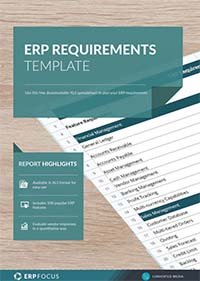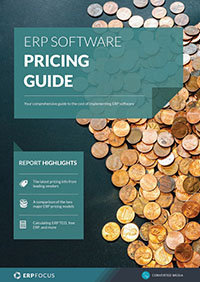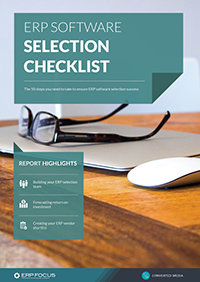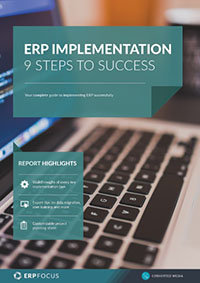A beginner’s guide to ERP integration
The concept of ERP integration is vital for any business operating legacy systems. We all have tools that function effectively, and we wish to continue using them. Many of us prefer specific systems because they are best of breed or otherwise fit well within our operational needs. ERP systems must communicate with these other systems, leading to the necessity of ERP integration.
Definitions
The word "integration" originates from the Latin word integrare, which means "to make whole." In modern terms, integration refers to the process of combining parts to form a whole.
Communication, on the other hand, involves sending a message on a subject and subsequently receiving the same message with the intended meaning intact. In business communications, maintaining integrity is crucial—any loss of communication can lead to errors and inefficiencies.
What is ERP integration?
ERP integration involves connecting an ERP system with other business systems to enable seamless communication and data exchange. The goal is to ensure that different business systems can work together effectively. Modern businesses often operate multiple systems simultaneously. For example, software is used to manage an online storefront, accepting orders and payments, which are then managed and fulfilled through an ERP system.
If the volume of orders is very low, someone can print a report from the storefront system of orders received recently and then type those orders into the ERP system.
Check out our ERP comparison to find out what popular ERP systems can offer your business
Consider a sophisticated product management system that includes specific chemical formulations and tightly managed temperature and pressure measurements. This system must integrate with your ERP's production order scheduling and bills of material management.
Integration requirements may also be external. For instance, a customer may send a high volume of orders and expect a quick turnaround, necessitating automatic integration of these orders with your internal ERP order fulfillment systems.
What are the common methods of ERP integration?
Common methods include point-to-point integration, custom integrations, EDI, APIs, and using an Enterprise Service Bus (ESB).
Point-to-point integration
If we read any of the literature on integration, we see references to point-to-point integration as the most simple model. There would be a single sent message from one system that we use as a single received message read into another system. Our storefront to ERP example above seems to fit that definition. Or, does it?
To create a sales order in an ERP system, a valid customer record is required. If the order comes from a new customer, this record must be created in the ERP system. Additionally, if the product sold is labeled as model XYZ in the storefront but as model 123 in the ERP, a translation table must be established to match these identifiers.
Payments recorded in the storefront system must also be recorded in the ERP's accounting module. ERP integration methods must address these complexities, including matching shipping methods, updating tax jurisdictions, and managing customer shipping dates.
Point-to-point implies a single transmission point to a single reception point. Even using our simple example, we see there are multiple reception points within ERP and, since we must transmit from ERP to the storefront, we have additional transmission channels. There is a mathematical formula to calculate the number of channels we must develop integrations to manage but we can easily see there are few truly simple integrations.
Custom integrations
As businesses recognize the complexities of integration, many opt for custom ERP integrations. Most ERP systems include a library of pre-defined connections that allow customized programming to connect to the ERP while keeping all validation and other rules intact. This approach enables developers to essentially "mirror" a keyboard input through programming.
A set of custom programs can accomplish our entire set of integrations linking our web storefront to ERP. We have a test for a new customer ID and, conditionally, the creation of the new customer record. We get the new sales order. We use a matrix to translate from one version of product identification to the version used in ERP. In addition, we can link backward from ERP to the storefront to update the shipping date from ERP notifying the customer when to expect his order to be delivered.
EDI
Electronic Data Interchange (EDI) is another powerful integration method. Early adopters, like automobile manufacturers, used EDI to ensure suppliers delivered components at the precise moment they were needed on the assembly line.
EDI documents include purchase orders and changes to those orders. Almost any type of business document is included in the EDI set so that businesses can communicate electronically with speed and accuracy without any human requirements involved to slow the processes.
For example, a customer's purchase order can be instantly translated into a sales order in the supplier's ERP system. The system can then send an Advance Shipping Notice (ASN) to the customer's ERP, informing them that their order is en route.
EDI is well-proven and can be used within a business as an integration link between systems as well. The sending system sends an EDI message to the receiving system, which receives and processes that message accurately. EDI might not be the newest technology but it can serve well.
Application Program Interfaces (APIs)
Modern systems, including integrated ERP systems, are often equipped with APIs (Application Programming Interfaces). APIs provide explicit guidelines for interacting with the system, including data structures, routine specifications, and other components necessary for seamless communication.
Developers can use APIs to match the ERP system with other systems, facilitating the desired communications. While this approach still involves custom integration, it simplifies the development process and ensures that the integration adheres to the rules set by both systems.
Enterprise Service Bus (ESB)
An Enterprise Service Bus (ESB) represents a more advanced category of software for integration. Businesses can use an ESB in conjunction with ERP and other essential systems. The ESB acts as a communication medium, "listening" for messages sent by one system and "translating" them into the appropriate language for the receiving system.
An ESB can route messages between various services, manage data transformation, handle errors and exceptions, and enforce quality control. However, while ESBs offer significant benefits, they are also complex, expensive, and typically used by larger businesses with extensive communication needs.
Most ESB software is used by large enterprises, as smaller businesses might not have the resources required for its implementation and maintenance. However, for those who can invest, an ESB can provide a centralized integration solution, albeit one that introduces a potential single point of failure if not managed correctly.
Choosing the right ERP integration strategy
Selecting the right ERP integration strategy depends on several factors, including the complexity of your systems, the volume of data you handle, and your budget. Whether you opt for point-to-point integration, custom integrations, EDI, APIs, or an ESB, the goal is to create a cohesive system that enhances operational efficiency.
Integrated ERP systems are not just about connecting different software; they are about creating a unified approach to managing all aspects of your business. The right strategy will depend on your specific needs and the tools at your disposal
Conclusion
ERP systems today are akin to Swiss army knives, offering numerous tools that can be used as needed. However, most businesses also rely on additional systems, some of which may be legacy systems or best-of-breed solutions that are essential to operations. These systems require ERP integration to function seamlessly within the broader business ecosystem.
The ultimate goal is to achieve a single, integrated system that can be used across all functions by all users. Until such a system exists, ERP integration is necessary to create a cohesive operational environment. Despite its complexity, integration is becoming easier and more robust, thanks to advances in technology, APIs, and integration methods like web services, XML, and JSON.
Free white paper

ERP Requirements template
Plan your ERP selection using our requirements template with 100 features in an editable spreadsheet. Include special requirements and extra detail in this exclusive template.

Featured white papers
-

ERP Software Pricing Guide
Get the latest pricing information on over 80 popular ERP systems, and learn how to budget for your ERP project in our free guide
Download -

60-Step ERP Selection Checklist
Get the comprehensive checklist for your ERP selection project
Download -

ERP Implementation: 9 steps to success
The 9 proven steps you should follow when implementing ERP
Download
Related articles
-
![3 Tips for Achieving Buy-In for Your ERP Integration [by pressfoto on Freepik] 3 Tips for Achieving Buy-In for Your ERP Integration [by pressfoto on Freepik]](jpg/3%2btips%2bfor%2bachieving%2bbuy-in%2bfor%2byour%2berp%2bintegration%2b%255bby%2bpressfoto%2bon%2bfreepik%255d65d7.jpg)
3 tips for achieving buy-in for your ERP integration
Read our expert’s tips on getting your ERP integration project off the ground by achieving busine...
-

CMMC Compliance: What Aerospace and Defense Manufacturers Need to Know
Key insights on CMMC compliance, deadlines, and securing DoD contracts with CMMC 2.0 certificatio...
-

A complete introduction to using ERP for fleet management
Your ERP can be a brilliant fleet management tool if you use it correctly. Learn how with this in...

